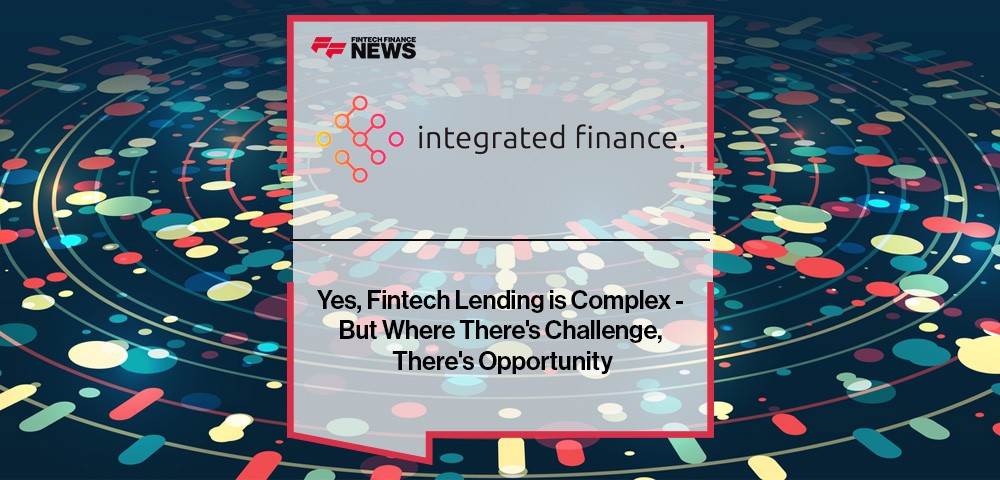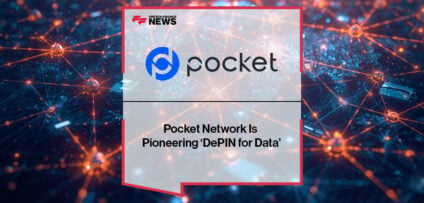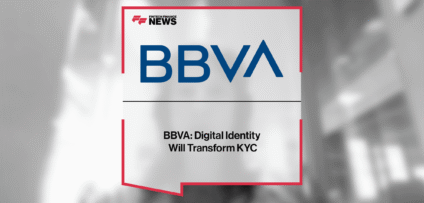Breaking News

Yes, Fintech Lending is Complex – But Where There’s Challenge, There’s Opportunity
by Alistair Cotton, Co-Founder of Integrated Finance
In a world where the term “loan” is no longer synonymous with a dry, arduous process and traditional credit scores, the fintech landscape unfolds a rich tapestry of data-driven decision-making and real-time responsiveness. However, with any innovation, there comes an inevitable complexity, posing challenges for some and opportunities for others.
The challenges of lending in fintech
The fintech ecosystem has rapidly become a haven for innovation, reshaping how money moves and loans are facilitated. Alongside this newfound agility arises a labyrinth of challenges intertwining technology, trust, and time. Achieving true efficiency requires fintechs to surmount several hurdles, rooted in the intricacies of complex money movements.
Data Handling and Privacy Concerns: Gone are the days of relying solely on traditional bank statements and credit scores. Managing unconventional data sources introduces challenges in privacy law compliance and customer trust. This mandates a robust framework for responsibly managing sensitive information.
Data Handling, Privacy, and Decision-making: In today’s financial landscape, traditional bank statements and credit scores are no longer the sole determinants for lending decisions. Managing unconventional data sources raises challenges in privacy law compliance and customer trust, requiring a robust framework for responsibly managing sensitive information. At the same time, the need for speedy decision-making is ever-present. However, it must not compromise accurate risk assessment, which includes ensuring lending transaction compliance, screening, and monitoring. APIs can be instrumental in striking the right balance, facilitating quicker and more informed decision-making processes that consider both speed and accuracy.
Increased Complexity in Integration: The addition of new components such as additional verification layers, API calls, or third-party services to a lending stack can quickly escalate complexity. This is further complicated by the numerous actors involved in a single lending transaction. What begins as a simple augmentation often turns into an intricate endeavour requiring meticulous planning and sustained attention.
Ecosystem Actor Dependencies: One often overlooked challenge is the dependencies on various ecosystem actors, such as banks or payment processors. These dependencies can significantly slow down scalability, unit economics, and even revenue opportunities, limiting the ability to realise efficiencies in financial operations.
Implementation Challenges: The practical aspects of issuing accounts to merchants, setting up effective account structures, recording available balances and receivables based on dynamic business events, and building custom funds movement logic, all present their own sets of challenges.
It’s worth noting that the challenges in fintech lending can’t simply be surmounted by the ad hoc use of APIs. Instead, the key lies in the thoughtful integration of financial SaaS technologies. These platforms are adept at managing the multifaceted nature of financial transactions, orchestrating diverse API touchpoints, and mitigating dependencies on various ecosystem actors. By doing so, they transform these challenges into opportunities for innovation and meaningful results
The opportunities for fintechs in lending
“The essence of modern fintech lending lies in transforming challenges into assets, complexity into insight, and risk into opportunity.”
If fintechs can navigate the challenges of increased complexity and a desire for transparency, and a demand for speed, there are incredible opportunities in the modern day lending market.
Leveraging Non Traditional Data Sources: The marvel of this era is the ability to glean insights from seemingly mundane data. Those recurring weekly orders from Deliveroo might have been a casual choice for a customer, but in the hands of a skilled fintech, it’s a crucial piece in the puzzle of credit risk. Going beyond traditional bank statements and analysing credit behaviour in a holistic way paints a much clearer picture of a customer’s profile.
Customised Solutions for the Mid-Market: The untapped potential of fintech is not in competing with massive banks, but in offering specialised services for the often-overlooked mid-market businesses. The key lies in demystifying complexity and unlocking opportunities for this underserved sector. This can be achieved through:
Flexible Orchestration and Ledger Features: Such capabilities can accommodate a wide range of lending scenarios, aligning with the diverse needs of customers, lenders, users, regulators, and banking providers.
Eliminating the Need for Custom Integrations: Leveraging existing technologies means companies can avoid the hassle of building complex logic for revenue collection and money movement, thus achieving operational efficiency with complete transparency and accuracy.
Scalable Unit Economics: The use of pre-built banking connections and integrations can help in reducing development costs, thereby allowing businesses to tap into new revenue streams more efficiently as they expand their customer base.
Dynamic Risk Profiling: The game has changed, and static risk assessments have made way for fluid, adaptable profiles that respond to macroeconomic factors. Integrating various data points allows fintechs to create a more responsive and intelligent approach to risk evaluation. APIs can be the enablers of this dynamic approach, allowing seamless integration of diverse data sources and contributing to a more nuanced understanding of risk.
The future of fintech lending
Fintech lending represents a new frontier, blending challenges and opportunities in a rapidly changing financial landscape. Traditional lending is yielding to more dynamic, data-driven practices, and while the complexity of this new paradigm may seem daunting, it’s not insurmountable. Rather, it’s a marker on the path to a more responsive lending space.
The essence of modern fintech lending lies in transforming challenges into assets, complexity into insight, and risk into opportunity. It is about navigating the uncharted territories with finesse, adopting technology as an ally, and embracing the multifaceted aspects of modern lending. These aren’t merely alternatives to conventional practices but revolutionary steps that redefine the entire lending experience.
In this context, Fintech infrastructure technologies emerge as pivotal catalysts, enabling multiple financial entities to converse seamlessly. Such API-first technologies are more than tools; they are the strategic linchpins transforming and connecting the entire financial ecosystem. By reducing complexity, trimming costs, ensuring security, and enhancing efficiency, APIs are fostering a more streamlined and cost-efficient business model in fintech. They bridge the gaps between technology, trust, and time, leading to a seamless integration that turns complexity into opportunity.
The future of fintech lending is aligning adaptability, innovation, and precision. The complexities of integration become opportunities with the thoughtful use of technology. The keys to this promising future lie in innovation, careful planning, and a willingness to explore beyond traditional boundaries. It’s an exciting era for those ready to engage with the evolving opportunities of modern lending.
People In This Post
Companies In This Post
- EXCLUSIVE: “Check, Check… and Check!” – Pilar Fragalà, CBI in ‘The Fintech Magazine’ Read more
- BBVA: Digital Identity Will Transform KYC Read more
- Pocket Network Is Pioneering ‘DePIN for Data’ Read more
- Kea Rolls Out Local Payouts in 85+ Currencies Read more
- Friendly Fraud Expected to Increase by 25% Between Thanksgiving and Cyber Monday, Warns ACI Worldwide Read more















